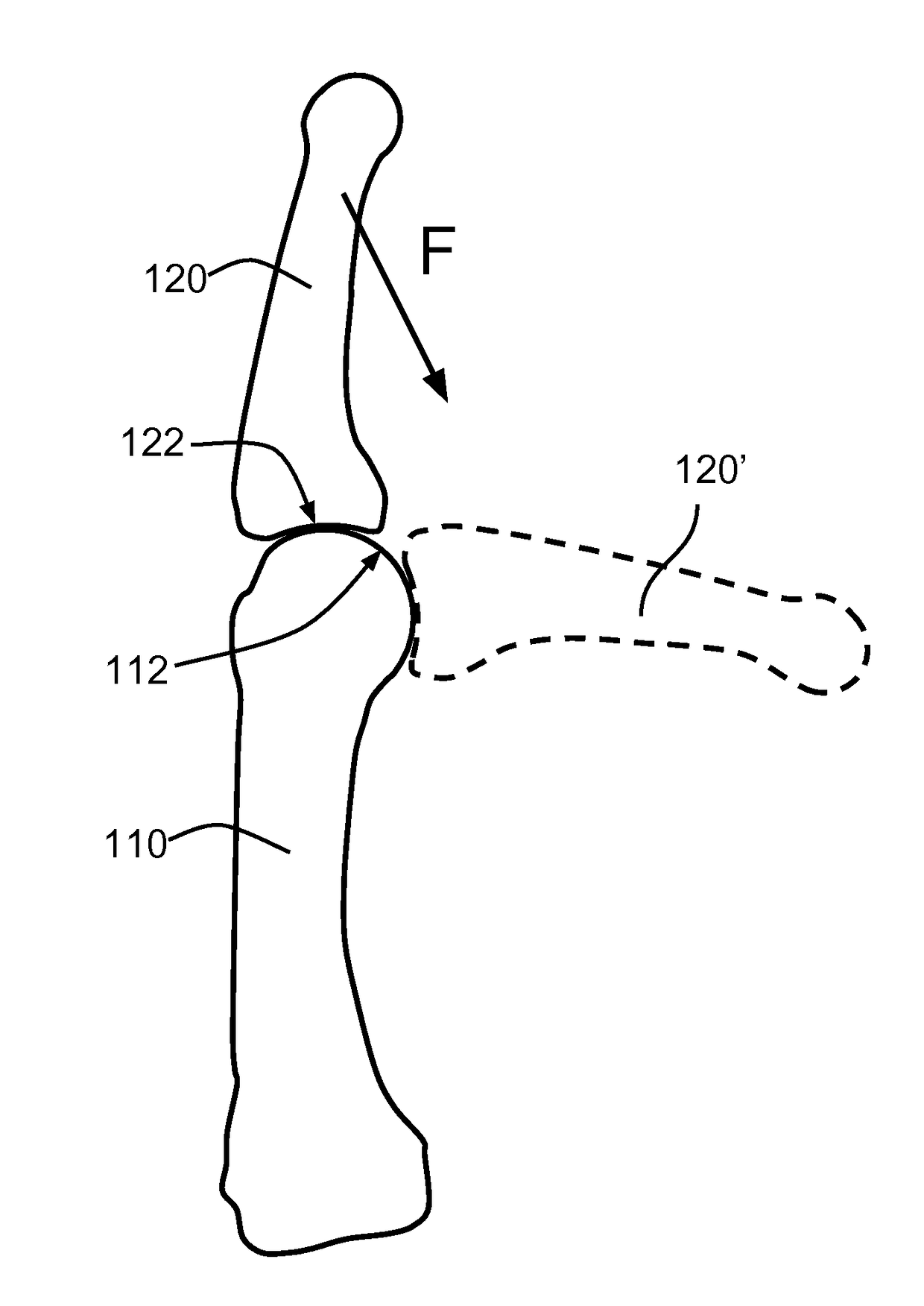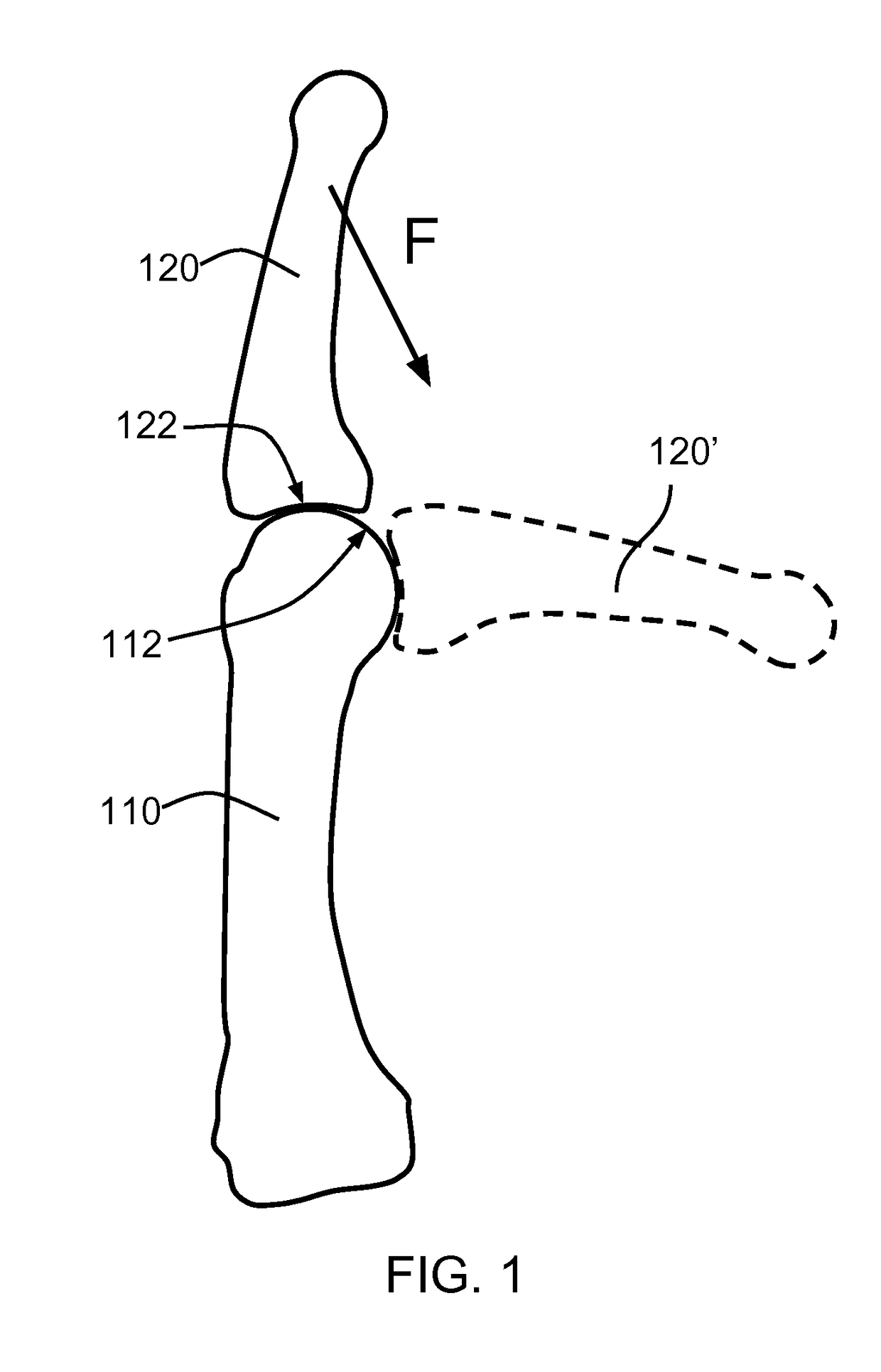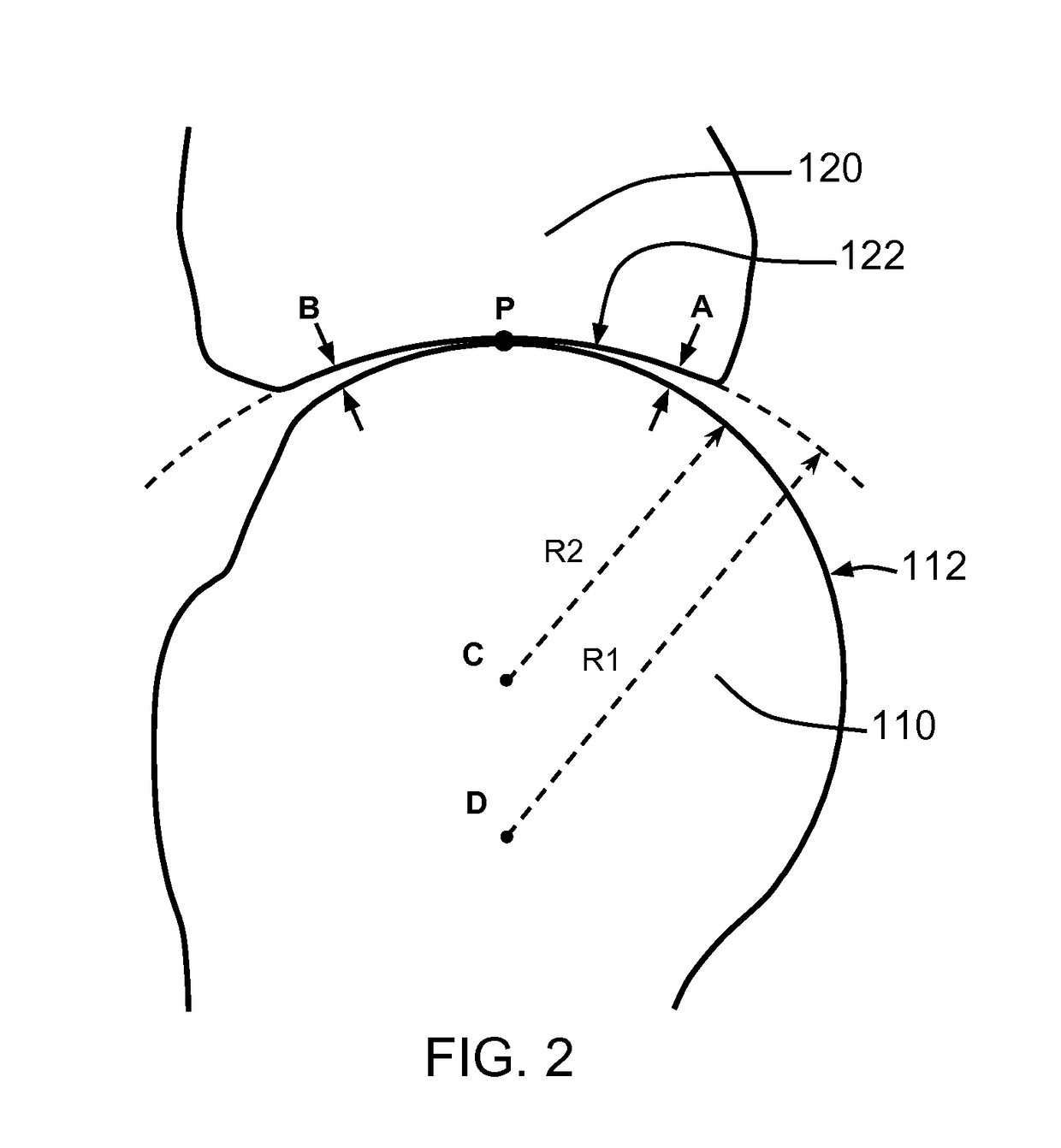Anatomical Robot
a robot and anatomical technology, applied in the field of robots, can solve the problems of sacrificing a great deal of manipulation functionality, affecting the operation of the robot, so as to achieve the effect of eliminating rigor mortis, reducing the number of robots, and reengineering the work environmen
- Summary
- Abstract
- Description
- Claims
- Application Information
AI Technical Summary
Benefits of technology
Problems solved by technology
Method used
Image
Examples
Embodiment Construction
[0038]An important and defining part of an anatomical robot are the anatomical robot joints. Analogous to biological joints that connect and allow bones to move, anatomical robot joints allow movement of the structures of an anatomical robot. There are two important components to any one anatomical robot joint, the contacting surfaces between two structures and the flexible bands that hold the two surfaces together. Flexible bands couple two structures together but still allow motion of one structure relative the other structure.
[0039]Also important to an anatomical robot joint is that when two contacting surfaces are coupled together, one surface is a concave shape and the other surface is a convex shape. The two surfaces are further defined as single lobe, double lobe, or saddle shaped.
[0040]There are three basic types of motion, as defined in this invention, that can occur in an anatomical robot joint. These types of motion are rocking, slipping, and twisting. Rocking type of mot...
PUM
 Login to View More
Login to View More Abstract
Description
Claims
Application Information
 Login to View More
Login to View More - R&D
- Intellectual Property
- Life Sciences
- Materials
- Tech Scout
- Unparalleled Data Quality
- Higher Quality Content
- 60% Fewer Hallucinations
Browse by: Latest US Patents, China's latest patents, Technical Efficacy Thesaurus, Application Domain, Technology Topic, Popular Technical Reports.
© 2025 PatSnap. All rights reserved.Legal|Privacy policy|Modern Slavery Act Transparency Statement|Sitemap|About US| Contact US: help@patsnap.com



